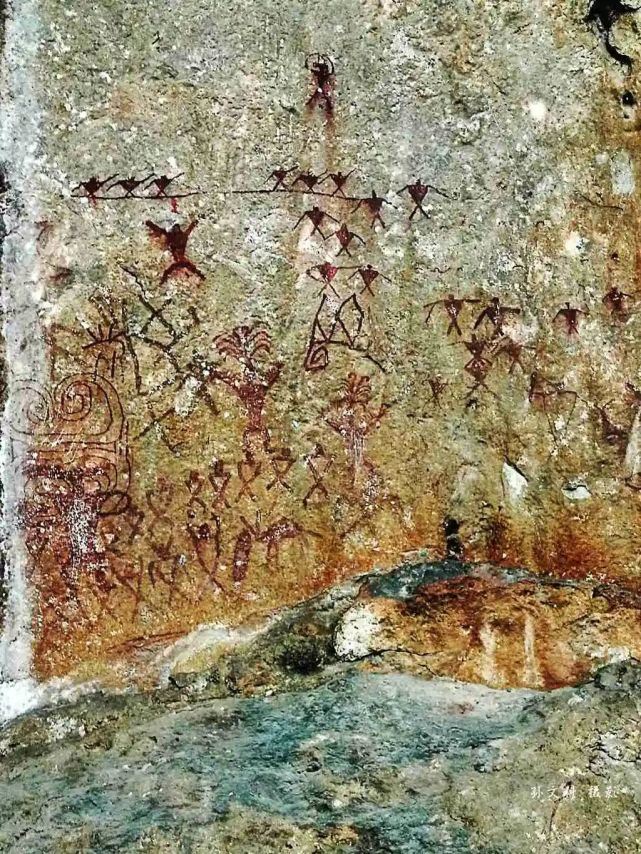Special report: Travel to Lincang by bullet train
Cangyuan rock painting: An oldest Chinese art
Located in Cangyuan County, Lincang City, the Cangyuan rock painting is one of the oldest Chinese art forms. The latest studies show the painted pieces were created 2,700 to 3,800 years ago.

The pieces of hematite paints are created on the limestone rocks at 17 sites. Adding up to 540 square meters, the 1,200 painted figures involve scenes of hunting, dancing, war, gathering, buildings and villages.
“The cliff pictures fully mirror the primitive living conditions of the Wa forefathers, looking plain, vivid and lifelike,” said Wang Ningsheng, a professor with the Institute of History, Yunnan Academy of Social Sciences.
In drawing human figures, bodies are rendered into inverted triangles, while the arms and legs are formed by flexible fine lines. The artists employ the gestures and head decorations to display the production and living activities of the Wa ancestors. The heads of humans and animals are rendered into dots, without much details of ears, eyes, or mouth. Certain animal pictures show their nose, horns and tails.

Researchers say the Cangyuan cliff pictures can be directly used as data in studying the ancient history, religion, culture and art of southwest China and Southeast Asia at large. The vivid pictures recorded the ancient social events, life styles, folk customs and more.
Lushi old town: Key stop on Ancient Tea-Horse Road
With a strategic location of hard access, Lushi old town hides itself deep into the mountains adjacent to the county town of Fengqing in Lingcang city. A key stop on Ancient Tea-Horse Road, Lushi is a major fortress in west Yunnan.

Walking into the old town, visitors are impressed by the uneven prints of horseshoes left by the ancient caravans. The old roads are coupled by buildings with the residential styles of Zhejiang, Jiangsu and Dali. Ruins of the Sichuan-Guizhou guild hall remained there, a reminder of the prosperous scenes in days gone by.
The most bustling place in Lushi is the Sifang Square. There, seniors gather for chats on sunny days, playful kids have fun on the streets, and visitors from afar unveil the mysterious old town via listening to talks by the aged. During the Spring Festival and others, operas are staged by invited troupes.
Strolling at dusk on the Lushi alleys, we finally entered a quiet little restaurant for some fried tofu. “Now the roads are equipped with street lamps, brightening the old town when darkness falls,” said the owner surnamed Huang. As more tourists arrive in the town, we cannot supply them enough food at times.” Over the years, Lushi has built up a trade center, a tourist center, a parking lot, a belvedere and others. A brand new tourist town is in creation, featuring cultures of the ancient Tea-Horse Road.

Youngsters are said to have ceased to be migrant workers. Instead, they returned home to be truck drivers, store owners or others. Some have earned money, enough to build up villas in new urban areas. They live upstairs, with downstairs left for business activities. The scenes of people loading and horse transporting are getting rarer, while cars and motorcycles are almost everywhere. As locals bettered off, the ancient Tea-Horse Road is brought back to life.
Source: Yunnan Tourism and Culture Times; Trans-editing by Wang Shixue